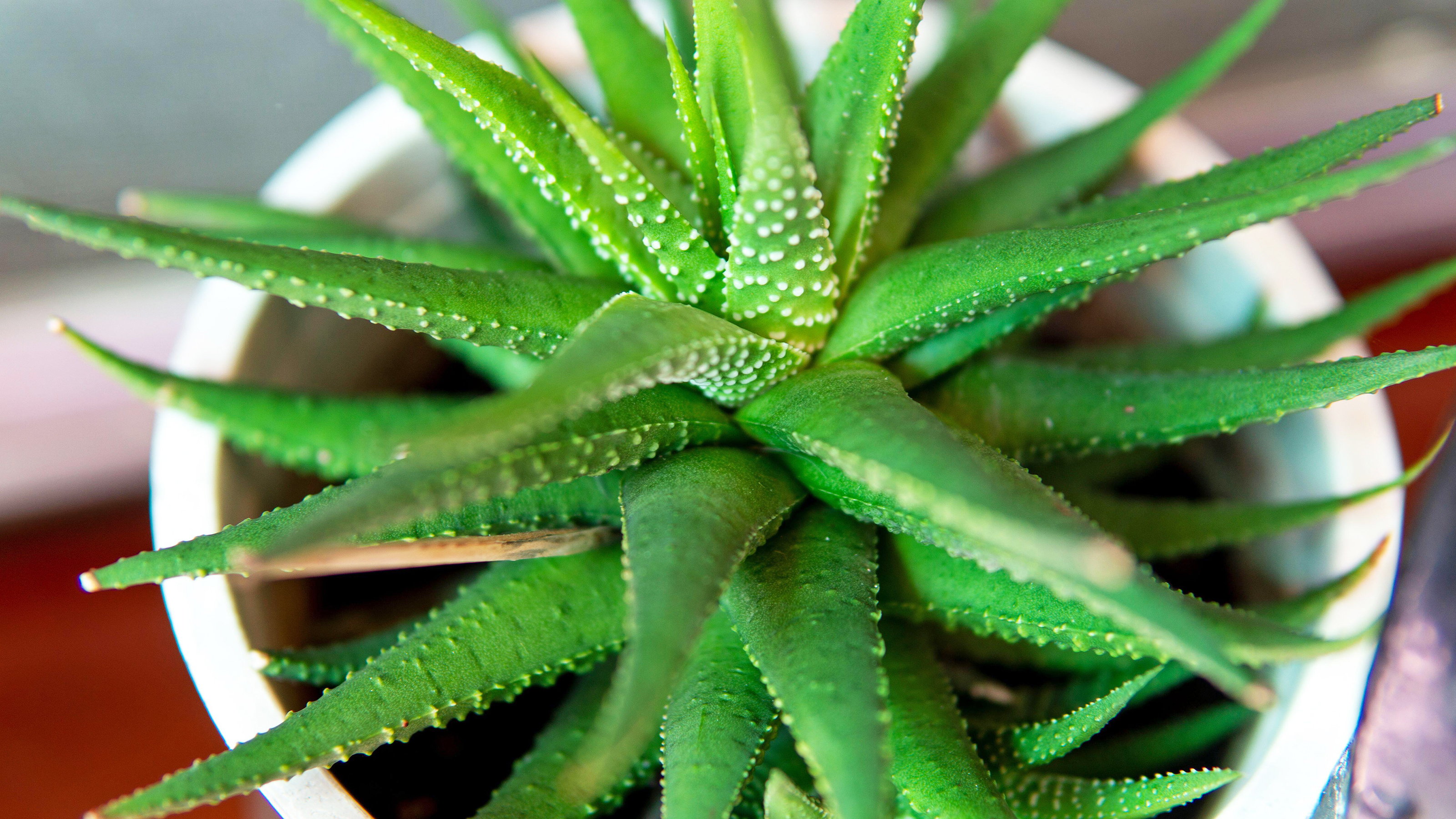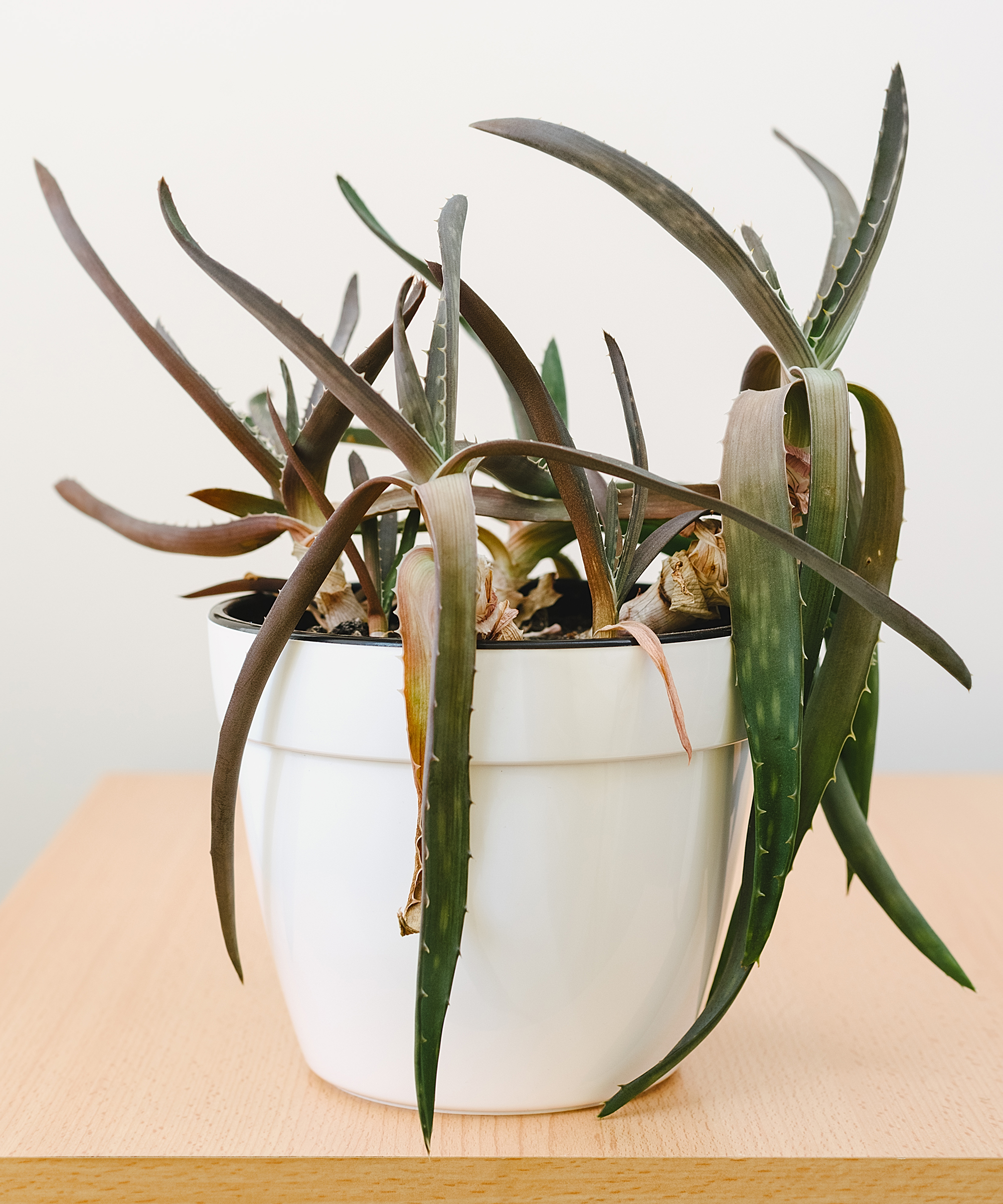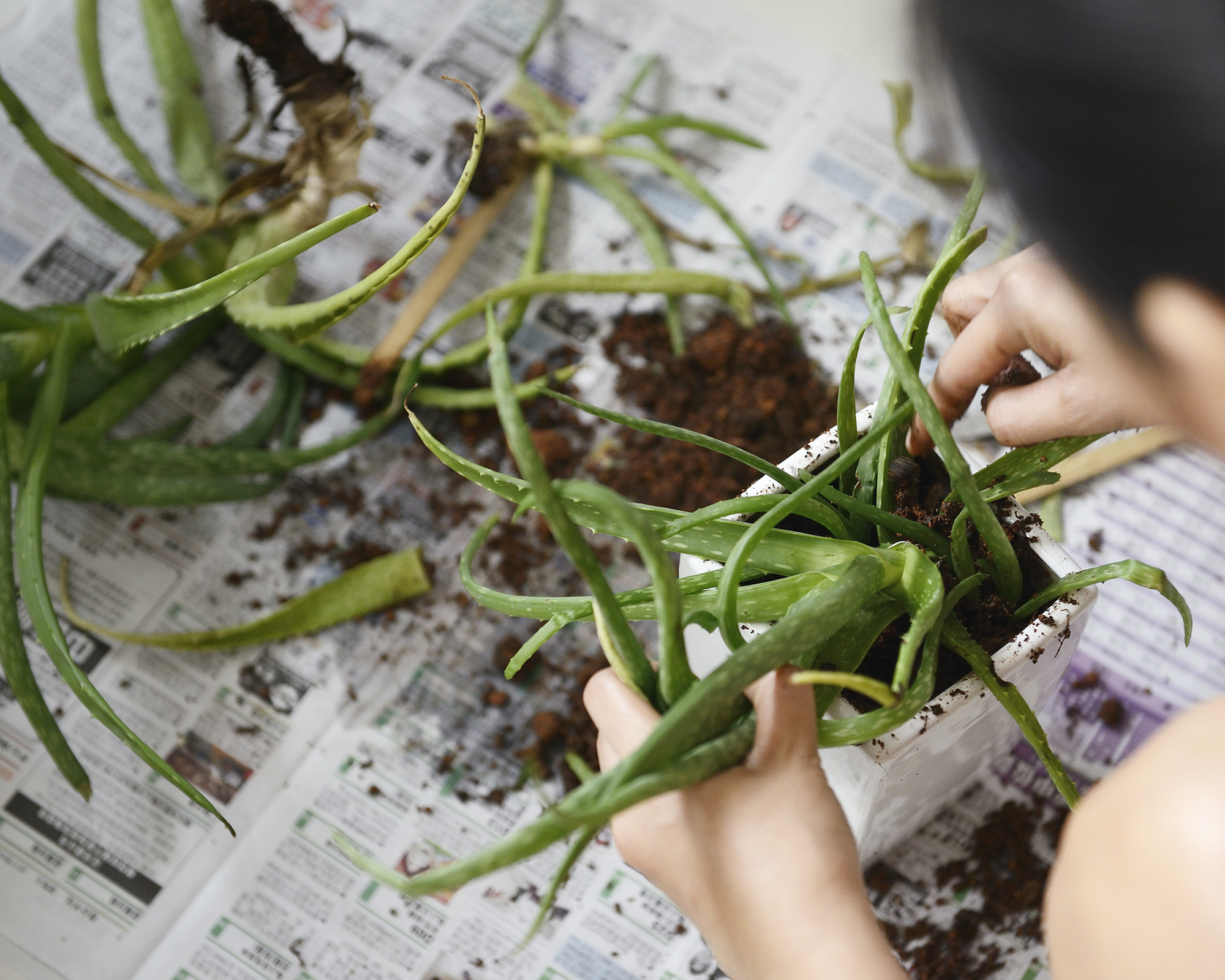Aloe Plant Drooping: 7 Common Causes & How To Fix Them
Aloes are usually sturdy, upright plants, so when leaves go floppy or the plant begins to lean over, it’s time to take action. Discover why aloe plants droop, and how to remedy the issue.

Is your aloe plant drooping? Then something isn’t right, and you need to rethink your aloe vera plant care routine.
The good news is that aloe is a forgiving, low-maintenance plant, so there is likely an easy fix.
Aloes are wonderful houseplants in cooler climes, while growing alow outdoors is ideal in warm regions.
There are dozens of different aloe plant types available – from tiny ground huggers, to tree aloe.
The commonly grown varieties found as houseplants have thick, ridged, spear-shaped, erect foliage. But a few varieties have curved leaves.
Aloe acutissima and Aloe barberae are two types of aloe that naturally have curved, drooping leaves.
However, if your plant is not a curved leaf variety, then droopy aloe leaves are a cause for concern.
Gardening tips, videos, info and more delivered right to your inbox!
Sign up for the Gardening Know How newsletter today and receive a free copy of our e-book "How to Grow Delicious Tomatoes".

Why Is My Aloe Plant Drooping?
A droopy aloe plant can be caused by a variety of reasons, but is generally easy to fix.
To help your plant to grow better, you need to understand why the issue happens.
1. Not Enough Light
Most aloe plants come from sunny, dry areas. They are tolerant of some shade but need at least eight hours of light per day for optimum growth.
Choose a position with bright indirect light – in front of a western window is ideal.
If the plant is drooping, it may be stretching for more light. Look at moving it to a brighter spot.
If there is not enough light indoors, try using a plant light to supplement the plant’s needs.
Letting it get too cold can have the same effect, so don’t let your aloe get colder than 50°F (10°C).
2. Too Much Water
Overwatering is probably the biggest cause of drooping in aloe vera plants.
How often to water an aloe vera plant depends on the climate and time of year. However, if you overdo it then root rot can occur and the plant may become infected with a fungal disease.
If you suspect overwatering is the case, then swift action must be taken. Pull the plant out of the container and inspect the roots. If they are smelly or discolored, prune off the diseased portion.
Repot the aloe in well draining soil and only water when the soil is almost completely dry. Water half as much in winter when the plant is dormant.

3. Not Enough Water
Drooping aloe leaves are not frequent in dry plants, but it can happen. The leaves are filled with stored moisture and the useful gel.
Aloe vera gel uses are varied but without enough water, the gel isn’t present and the leaves will not have their natural rigid stance.
While aloe can withstand periods of drought, complete neglect for a month or more could see this situation arise.
Increase watering to about once per week during the growing season.
4. Improper Fertilizing
Fertilizing aloe vera is recommended once per month from spring through summer. This should be applied conservatively as over feeding will produce spindly growth.
In winter, plants are not actively growing, so you shouldn’t fertilize at this time otherwise excess growth might occur that is leggy and limp.
5. Bacterial Soft Rot
When you observe an aloe plant drooping, it could be due to a serious root infection. This is a leading cause of an aloe plant dying.
The rot may not be visible to the naked eye, as it is taking place underground or deep in plant tissues.
Bacterial diseases can come in on the soil, be introduced by insect vectors, or from contaminated tools. Bacterial soft rot is more prevalent in moist, humid conditions.
Once the plant is infected, there is no treatment and it will have to be destroyed.

6. The Pot Is Too Small
Succulents seem to truly thrive when pot bound. However, if the pot is overcrowded then it’s time to repot aloe plants.
Crowded roots have difficulty uptaking nutrients and can cause the foliage to suffer.
Propagating aloe vera is easy to do when repotting, so why not make some new plants to share with friends?
Simply cut away the pups from the mother and plant them in separate containers.
7. Plant Has Reached Maturity
Baby aloe plants have tender, limp foliage as compared to mature plants. Once the plant is producing adult leaves, they will be more rigid and upright.
Old aloe plant leaves can curl with age. This is especially true in certain species.
How to Fix a Droopy Aloe Vera Plant
Once the plant is situated in good light, proper soil, and watered once per week, other attempts should be tried to perk up the plant.
Check the soil porosity by watering and assessing how long it takes to percolate from the drainage holes.
If the plant is barely trickling out the extra water and the soil feels boggy, switch to a cactus soil. Make sure the drainage holes are sufficient and fully open.
Cut Back On Watering
If you have trouble gauging soil moisture and are worried about overwatering, then invest in a moisture meter.
However, the tried and tested method of checking soil moisture is to insert your finger into the soil to the second knuckle. If the soil is dry, it is time to water.
Never let an aloe stand in water. During winter, water only when the bottom of the soil is dry. You can check this by touching into the drainage holes.

Divide The Plant
Crowded pots with many pups compete for resources with the parent plant. To divide aloe plants, use a sharp, sterile knife and cut these away.
Let the cut area callus for a couple of days before planting them in separate containers.
Repot Into A New Container
Sometimes the container itself is the culprit. Glazed, ceramic pots do not let excess moisture evaporate. Select an unglazed terracotta or similar pot.
Use well draining soil such as a mixture of 1 part potting soil, 2 parts perlite, and 1 part coconut coir.
Frequently Asked Questions
Should I cut off drooping aloe leaves?
If the leaves are discolored and dry, they should be cut off. Drooping leaves that are still green, and unwrinkled can remain while cultural changes are attempted.
Never cut off more than a quarter of the leaves on an aloe plant – this could seriously affect its health.
How do I keep my aloe plant from falling over?
If you have a leaning or drooping aloe, consider the above issues and make sure you provide the plant with the right growing conditions.
A leaning aloe is usually an easy fix, but if these issues are addressed and it still droops, try staking your plant or separating it into smaller plants.
How do you get aloe vera to stand up?
The varieties of aloe with naturally curling leaves will never stand upright. Changing the watering habits, ensuring sufficient light and well draining soil, and preventing over fertilization will usually perk up the leaves.

A Credentialed Garden Writer, Mary H. Dyer was with Gardening Know How in the very beginning, publishing articles as early as 2007.
-
 Looking For Plants To Give You The Soft And Fuzzies? Try These 5 Fuzzy Leaf Plant Options
Looking For Plants To Give You The Soft And Fuzzies? Try These 5 Fuzzy Leaf Plant OptionsLovers of texture, drama, silver foliage and tactile plants will adore these special sensory garden additions. These fuzzy leaf plant options will leave you all aglow
By Susan Albert
-
 Get Ready For A Summer Of Hummers! Grow These Full Sun Hummingbird Plants and Flowers
Get Ready For A Summer Of Hummers! Grow These Full Sun Hummingbird Plants and FlowersIf you’re lucky enough to enjoy a sunny backyard, make sure you are maxing out on your pollinator opportunities and grow these full sun hummingbird plants and flowers
By Tonya Barnett
